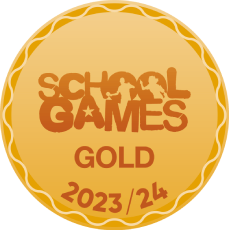Maths Curriculum
“Good Mathematics is not about how many answers you know…… it’s how you behave when you don’t know.” (Einstein)
Without mathematics, there’s nothing you can do. Everything around you is mathematics. Everything around you is numbers. –Shakuntala Devi
Maths Curriculum Intent
Our intent is to develop our pupil’s ability to reason mathematically, problem solve and develop procedural fluency and conceptual understanding in each strand of the curriculum.
We aim to support out pupils to become fluent in the fundamentals of written and mental calculations and techniques, through varied and frequent practice. We want them to become fluent in their knowledge and recall of number facts, and strive to have ‘facts at their fingertips’. At all times, pupils we aim for pupils to use precise mathematical language and speak in complete sentences.
As they progress through school, our children will develop the necessary skills to make them “deep thinkers”, acquiring maths skills that can be recalled quickly and transferred and applied in, and to,
different contexts. They need to be able to make rich connections across the areas of maths and use their knowledge in other subjects. Maths is the foundation for understanding the world and we want our children to know the purpose behind their learning and to apply their knowledge to their everyday lives.
At the core of our curriculum is the concrete, pictorial and abstract approach to maths. They are taught and encouraged to explain their choice of methods and develop their mathematical reasoning skills. We encourage resilience and conceptual variation and an acceptance that struggle is often a necessary step in learning.
St Dunstan’s follow the ‘White Rose’ maths scheme
Curriculum Implementation
Coverage of the Numeracy Curriculum is robust across all key stages and teachers use the White Rose Maths Scheme of Learning to support teaching for mastery. The approach offers clear progression throughout school and is consistent in the layout and structure of each lesson to allow for children to easily begin learning. This offers challenge to all pupils and a wide variety of resources are used to engage the children.
Mastery means having a secure understanding of mathematical concepts and processes, combined with a genuine procedural fluency. A child who has mastered a particular skill is able to apply their understanding and solve different types of problems, including where the skill is either embedded in a different context, or where a choice of method has to be made. For example, a child who has mastered adding two 2-digit numbers should be able to identify where this is required, even when it is not presented in a straightforward way (e.g. ⃝ – 23 = 39) and also choose an efficient strategy for doing it (e.g. 40 + 22).
Some children will be able to achieve mastery with greater depth. This means that they are able to apply their understanding of a concept in a wider variety of contexts, some of which are more difficult. They can manipulate the facts they know and the skills they possess in order to solve more complex problems. More developed forms of mathematical reasoning are central to this process, and enable the recognition of a link between operations and processes. For example, a child who has mastered the addition of 2-digit numbers in greater depth will be able to explain why it is possible to add two numbers both with units digits greater than 5 and get answers with units digits less than 5 (e.g. 16 + 7 = 23). They may also understand why adding a number to its matching reverse (46 and 64) will always give a multiple of eleven.
Maths is taught daily. The main maths lesson lasts approximately 45 minutes to 1 hour. The lesson structure begins with a short task to retrieve prior knowledge, usually in the format of a question recalling learning from last lesson, last week, last unit and last term/year. This provides regular recall practice to build fluency.
The small step for the lesson is then shared with the children and they revisit key concepts from previous learning that support the key learning of the lesson. Children then solve contextual problems as a class, with the teacher that exposes the structure of the mathematical concept. In this part of the lesson, teachers use careful questions to draw out children’s discussions and their reasoning and the children learn from misconceptions through whole class reasoning and talk. To support this, the teacher will often use a stem sentence to scaffold children’s articulation of mathematical ideas and reasoning, and/or a generalisation that supports application of the concept.
The children then work independently to apply their knowledge through a variety of fluency tasks progressing to reasoning and problem solving. This gives pupils the opportunity to make useful connections between identified mathematical ideas or to anticipate practical problems they are likely to encounter in adult life.
In EYFS and Key Stage 1, teachers follow the Number Sense approach to embed key number concepts and facts to aid quick retrieval of information. In Key Stage 2, teachers teach children specific number facts.
End of unit tests are used to help assess whether children are secure at the end of a topic and help identify gaps which can be addressed before moving on.
Times Table Rock Stars has been made available to support and engage children with the recall of times table facts.
 St Dunstan's School
St Dunstan's School





